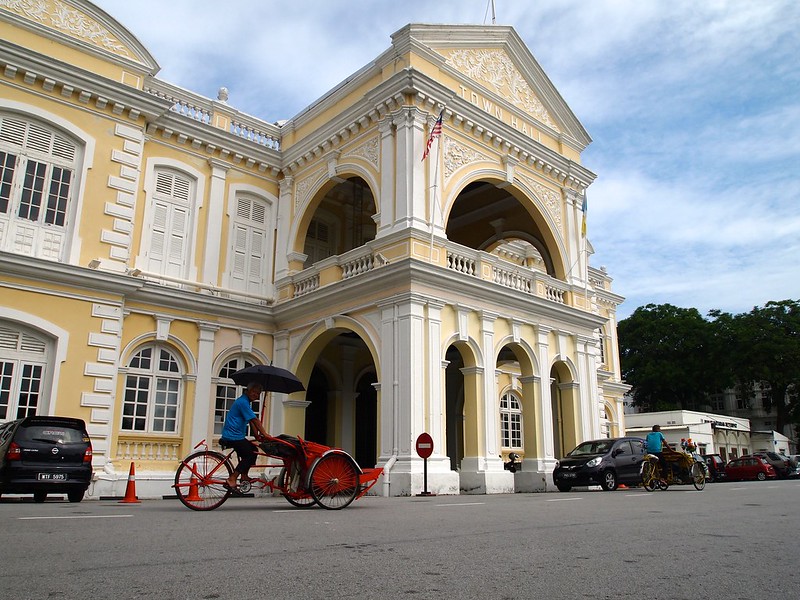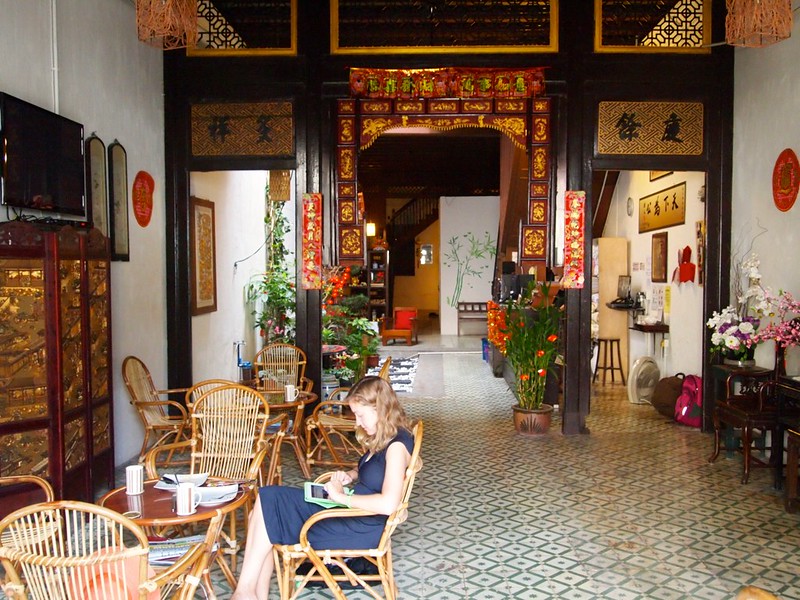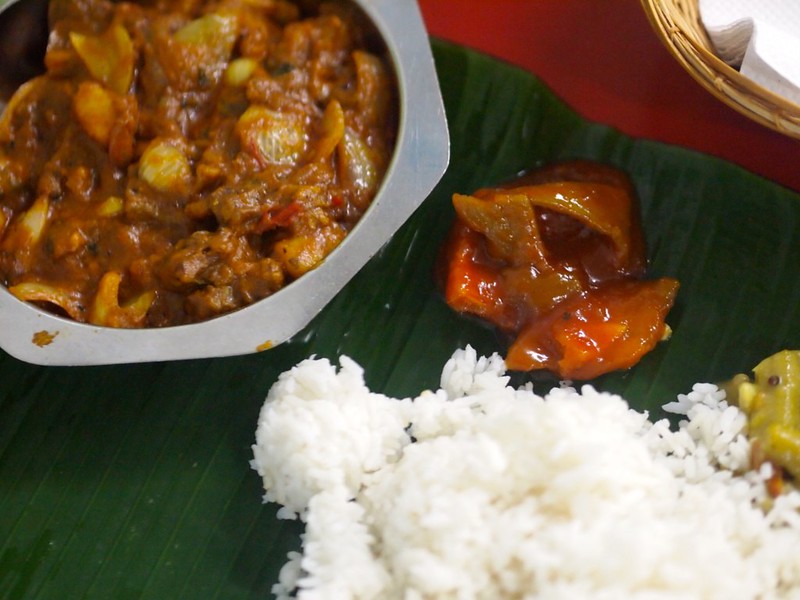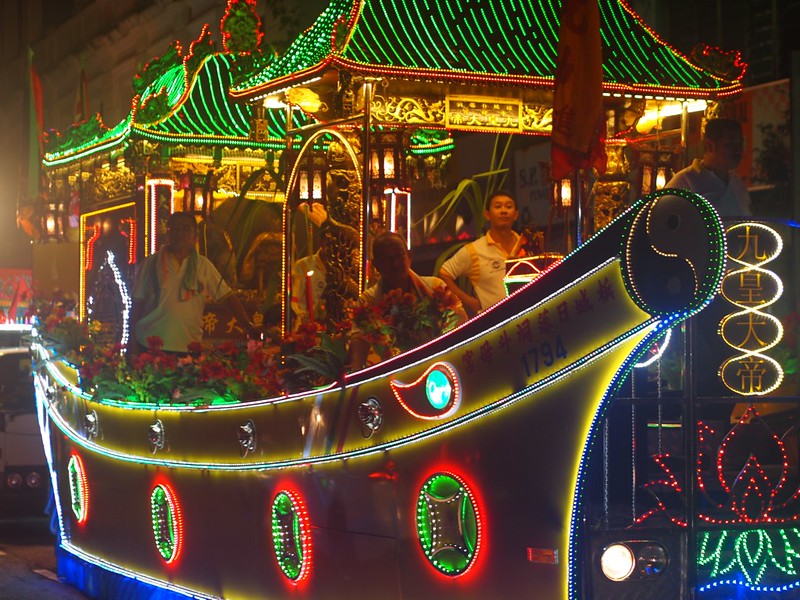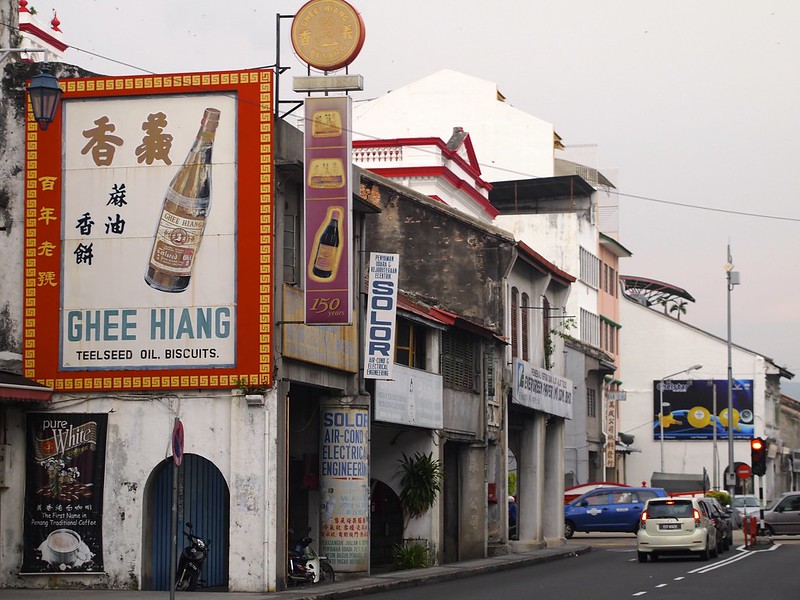“I Love Penang, and Penang Loves Me”
Martin Buber, a Jewish philosopher, once wrote that, “all journeys have secret destinations of which the traveller is unaware.” Georgetown, a city on the island of Penang off the Malaysian coast, is one of our secret destinations. We’d never heard of it until a few weeks ago, when we looked at a map and started charting our course through Malaysia. We ended up staying for a week and leaving with a heavy heart, convinced we could happily stretch our time here to two weeks or three or four ….

It’s hard to pinpoint what attracts you to a place, just as hard as identifying just what draws you to one person instead of another. But here’s a start:
It’s a fascinating multicultural stewpot
Here might be a typical day in Penang: walk around an old British fort and colonial town hall …
snack on Malay nasi lemak …
take a rest for tea and flaky coconut tarts at an old Chinese shophouse …
eat South Indian curries on a banana leaf for dinner …
and happen upon a Chinese parade on your way home, complete with dragon dancers, colorful floats, and men sticking enormous rings through their mouths in an act of devout self-mutilation. (On a side note, someone told us this parade was to pray to the Chinese god of road safety for an accident-free year. He was probably high, but it’s as good an answer as any.)
Penang has a road with the charming moniker “Street of Harmony.” You can walk it in about half an hour and, true to its word, you’ll pass two Christian churches, two mosques, a Hindu temple, a Taoist temple, and multiple Chinese clan houses.
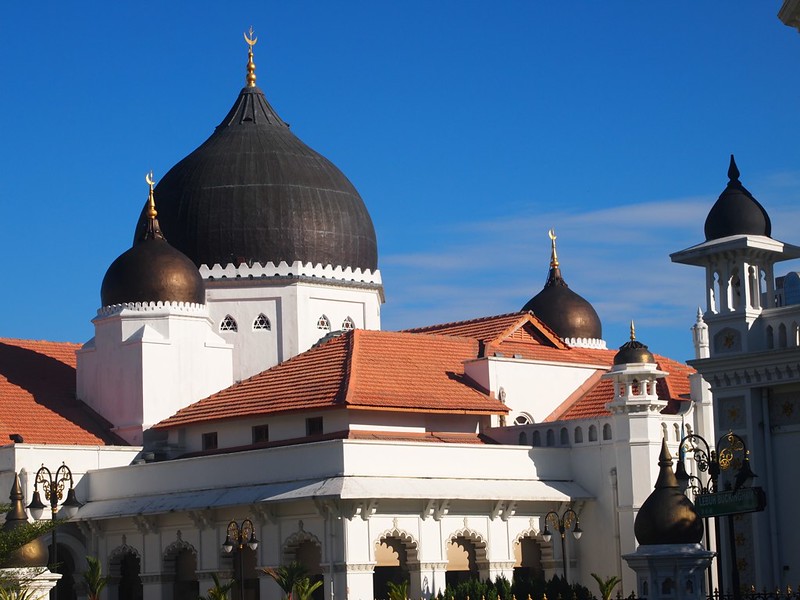
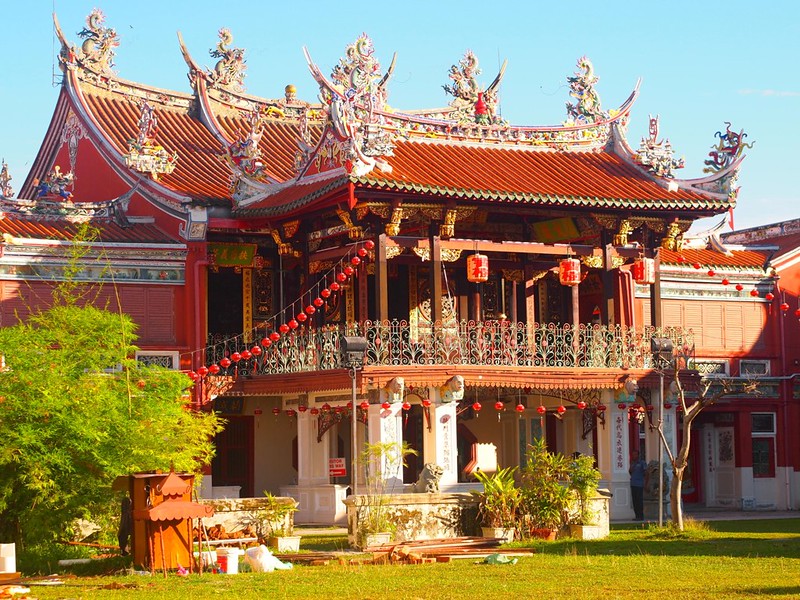
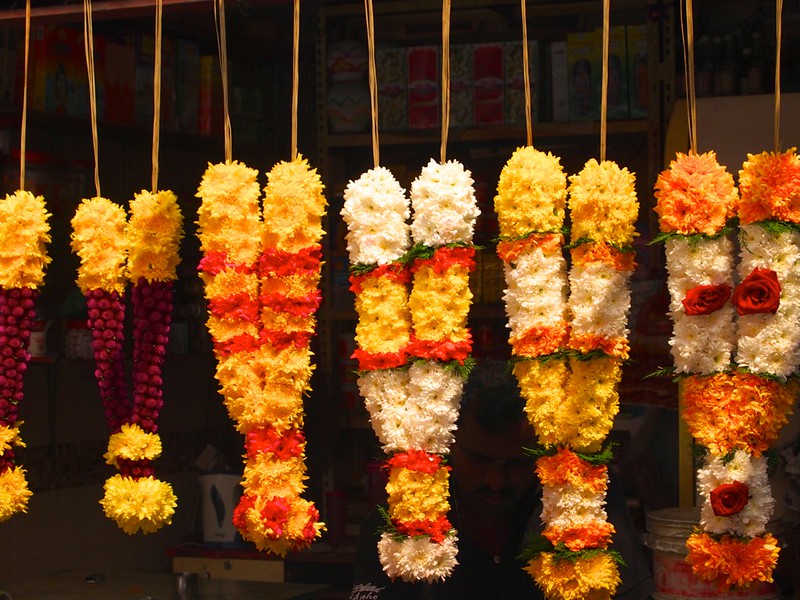
Along the Straights of Melacca, there’s even an entirely unique set of people: the Peranakans, or Baba-Nyonyas, the offspring of Chinese settlers and Malay locals. Many of these Baba-Nyonyas grew fantastically rich from trading spices, rubber, tea and other treasures from the Orient. I’m a total sucker for pretty old houses, and Penang has the Cheong Fatt Tze mansion, one of the most beautiful Peranakan mansions in existence.
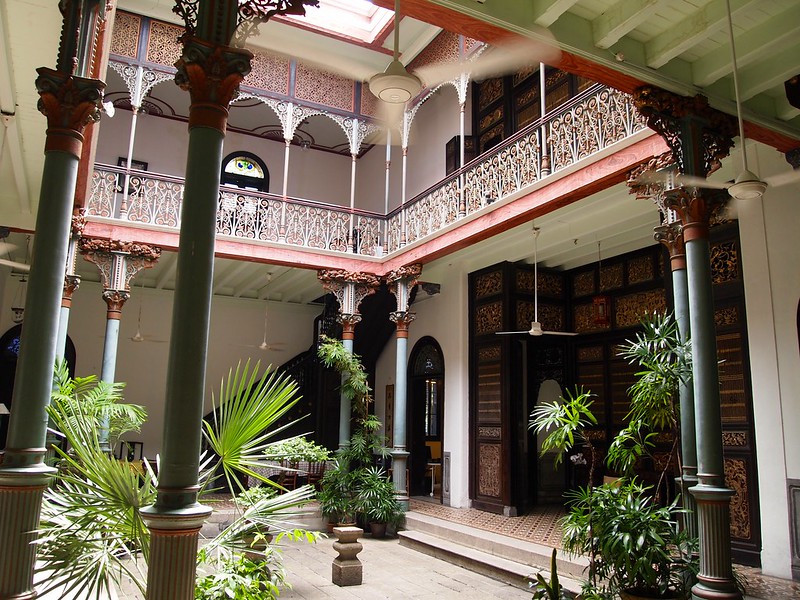
It’s beautiful, yet still authentic
Protected since 2008 by a UNESCO World Heritage Site stamp, the old part of Georgetown is full of beautiful old colonial buildings. Everywhere we went, it seemed there was another opportunity for a great photograph.
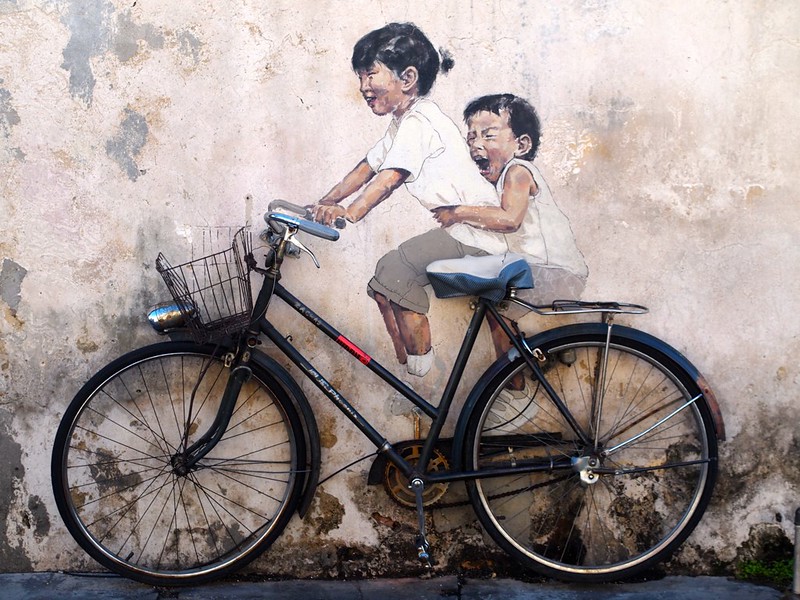
We’ve been to other beautiful cities — Luang Prabang, Hoi An. What really makes Georgetown special is that it still feels like a city with an identity apart from tourism. It still has local businesses selling everyday items, not T-shirts and keychains. Sure, the cyclo touts are around, but when we say, “no, thank you,” they’ll just respond, “you’re welcome” and keep pedaling.
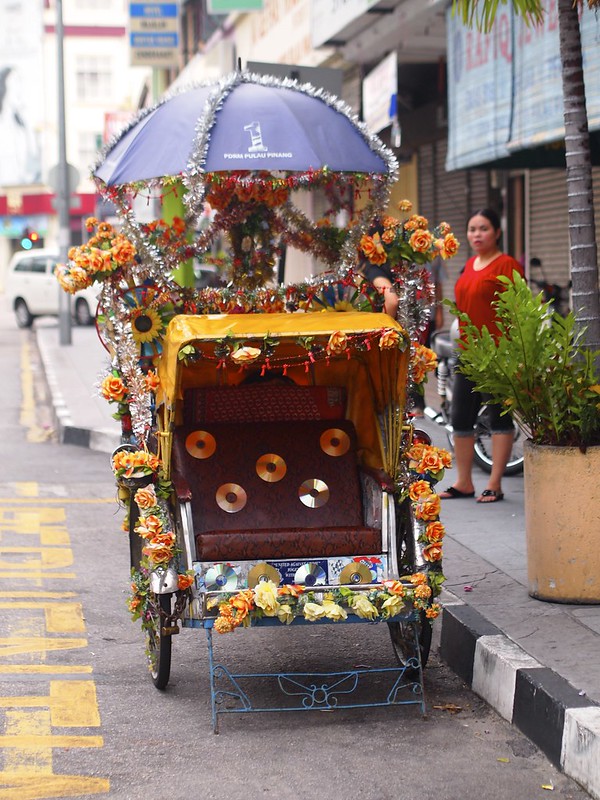
The interesting bits of the city — the markets, the churches, the parades, the tea shops — these exist for the locals, not as part of a Southeast Asian Disneyland.
The people are incredibly friendly
The people here could not be friendlier. We had lots of folks give us advice on food, the topic that seems to unite all the different people that live here. We also talked about the upcoming elections, other places to visit on the island, where we’re from, and why we should drink Chinese herbal tea every day to cool down our “heaty” bodies.
We also had the good fortune of meeting up with some like minded travelers in Penang, one of whom runs a really fabulous Etsy shop for her food-related artwork. We also had a fantastic guide at a spice garden we toured. Joseph was knowledgable, passionate, and unruffled when Jordan stared at him and said, “I know you!” Turns out Joseph was on an old episode of No Reservatons with Anthony Bourdain. Now we’re just one degree separated from the snarky king of food tourism himself!
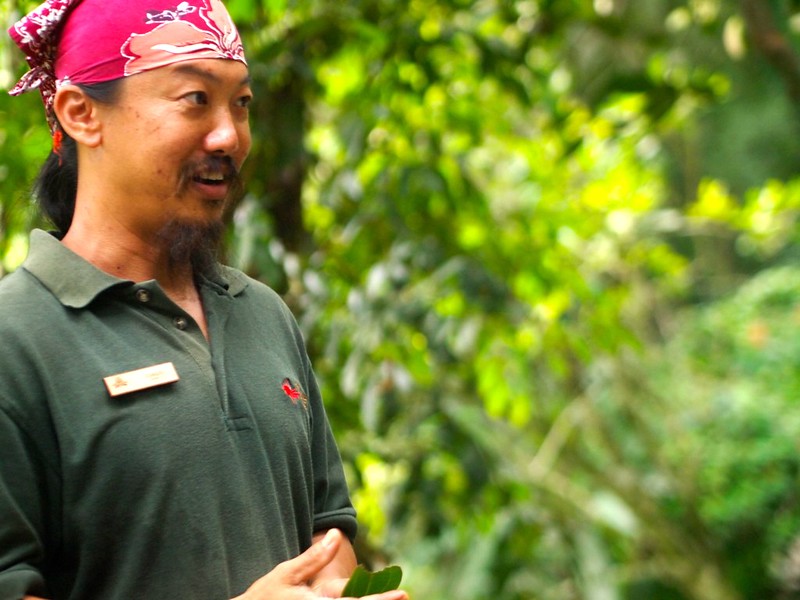
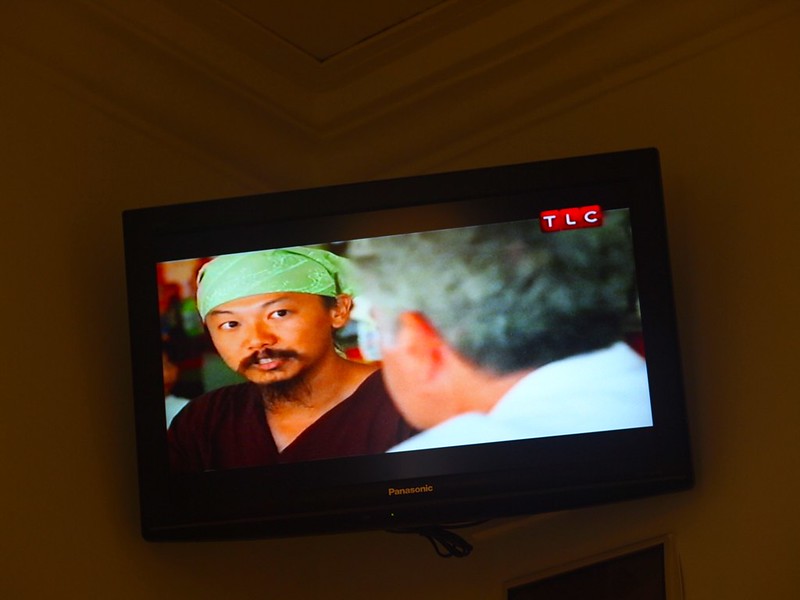
The food is fantastic
You knew this one was coming. The food in Penang is good. Really good. Every single thing we tried was simply outstanding. And the mix of Chinese, Indian, and Malay flavors is so new to us, so exciting, just stepping out for lunch felt like an adventure.
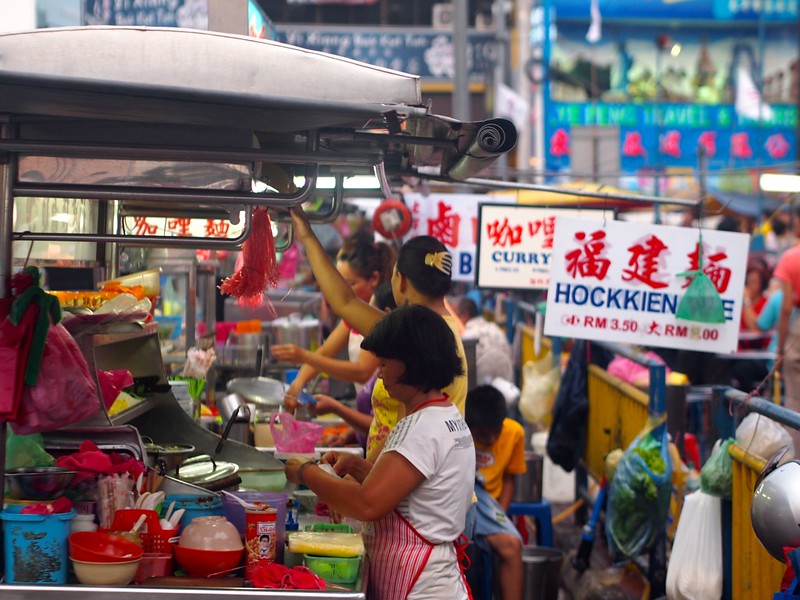
Penangites are so proud of their food heritage, in fact, the tourist office doesn’t hand out a map with local sites, it disperses a map with where to find almost thirty local dishes!
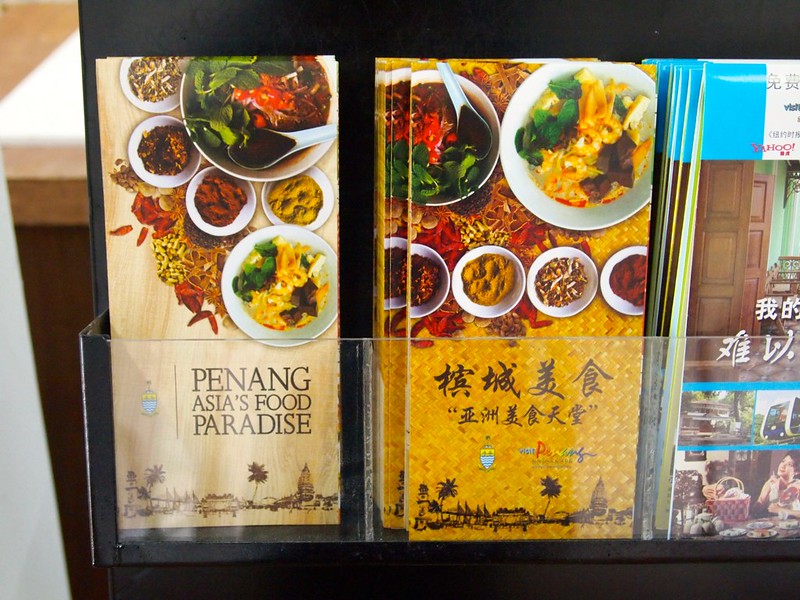
Given how Jordan and I, even after taking off on this grand adventure, are still list-oriented, square dorks, we made a spreadsheet with everything we wanted to try when we first arrived and felt overwhelmed by the choices. A leopard can’t change its spots.
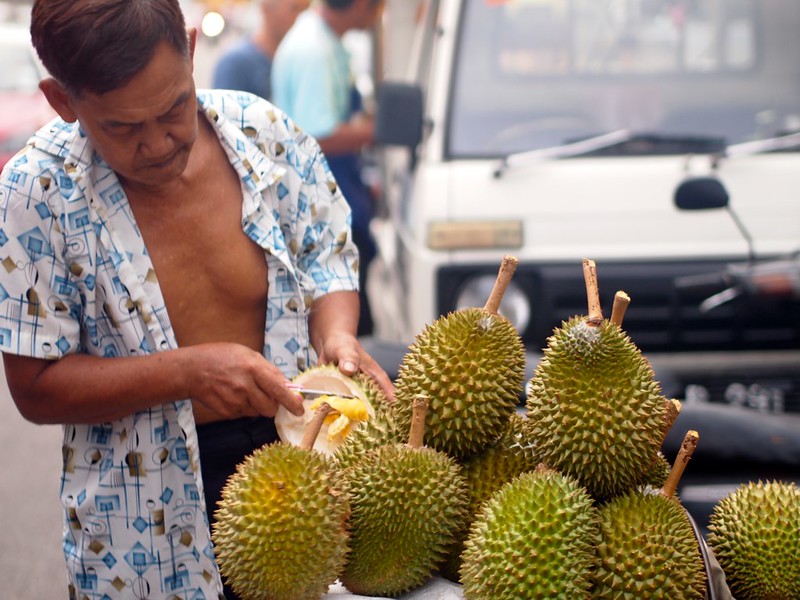
With all the wonderful places to visit in this world, it’s rare that we want to return to a place we’ve already been. But if we’re ever back in this part of the world (and we fully intend to make that happen), we will be returning to Penang.

